When will the Fed cut interest rates? Experts say later this year, if at all – here’s why
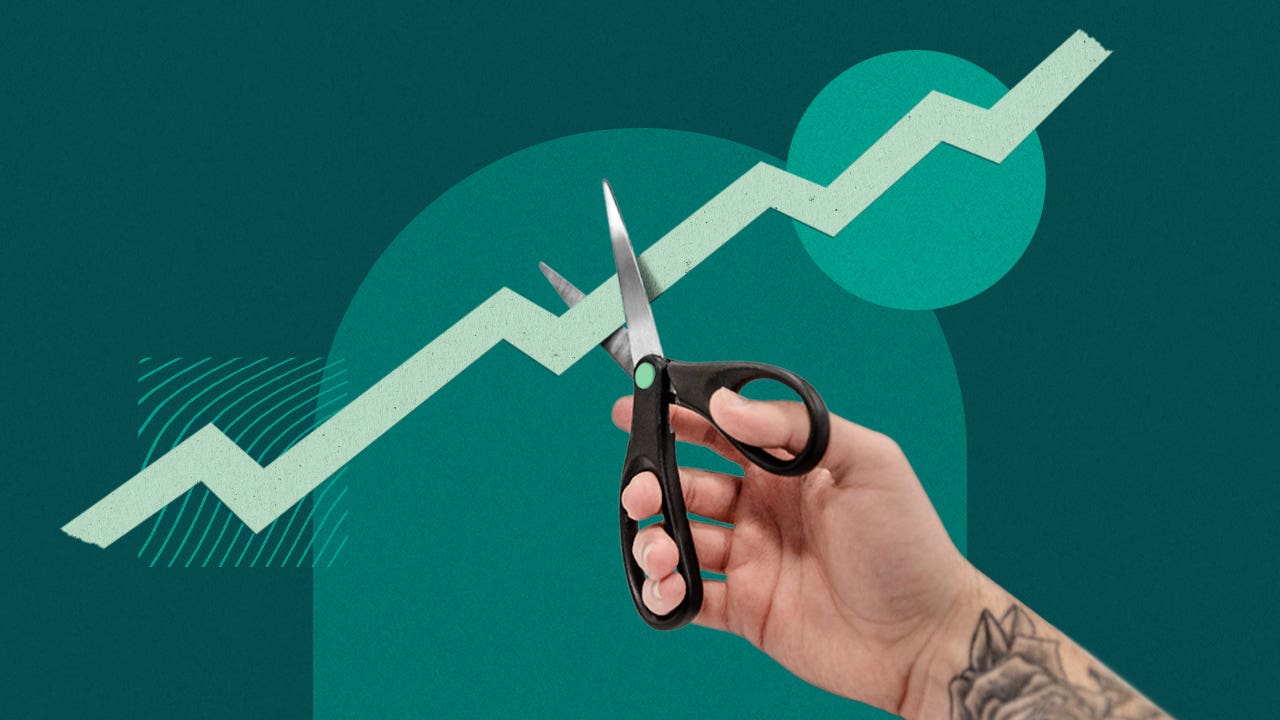
The Bankrate promise
At Bankrate we strive to help you make smarter financial decisions. While we adhere to strict , this post may contain references to products from our partners. Here's an explanation for .
Key takeaways
- The Federal Reserve's anticipated interest rate cuts appear delayed due to persistent inflation rates above their 2% target, defying the initial expectation of three rate cuts in 2024.
- Not only inflation but a potential deterioration in the job market could also prompt the Fed to reduce interest rates to safeguard the U.S. economic expansion.
- Regardless of when or how much the Fed cuts rates, it's unlikely to alleviate the burden of high interest rates, with mortgage rates, auto loans and more at the highest levels in over a decade.
Federal Reserve officials started off the year thinking they’d be able to cut borrowing costs three times in 2024, relieved by a faster-than-expected cool down in inflation.
The U.S. economy, however, has had other plans.
Officials on the Federal Open Market Committee (FOMC) are expected to announce that they’re going to keep borrowing costs at a 23-year high for another month when they wrap up their June meeting, the rate-setting gathering that many economists and investors once believed would mark the first cut since 2020. They’re also expected to signal fewer rate cuts in 2024 — if at all.
Rate cuts are delayed as policymakers have a staring contest with stubborn inflation, refusing to blink before prices do. After an optimistic end to 2023, the journey back to the Fed’s 2 percent target now appears delayed. Prices rose faster than expected in the first three months of 2024, thanks to a pop in energy prices coupled with already stubborn housing, insurance and services costs.
Back in December, inflation was on pace to hit 1.9 percent if the trends of the prior three months were to continue for a full year, a Bankrate analysis of Bureau of Labor Statistics data shows. Now, that three-month annualized average has been stuck at 4.5 percent for two straight months — even after inflation in April slowed for the first time this year.
Inflation also looks glued near 3 percent in the Fed’s preferred inflation measure, the personal consumption expenditures (PCE) index. Prices rose 2.7 percent from a year ago in April, matching March’s levels and up from 2.5 percent in February and January. Excluding food and energy, prices have risen 2.8 percent for three straight months.
The Fed's rate cut timeline
- Investors currently expect that the Fed will cut interest rates once this year, in November.
- Most of the nation’s top economists appear split on whether the Fed will cut once or twice, starting either in September or December.
- Many of Wall Street’s top firms took July off the table when an employment report showed that job growth boomed past expectations in May.
- Officials have four meetings left, not counting their June meeting (July, September, November and December.)
No matter when the Fed cuts rates or how much, it’ll do little to help heal the pain of higher interest rates for consumers. Two rate cuts would take the Fed’s benchmark rate back to 4.75-5 percent, a level that, before this recent high-rate era, hadn’t been seen since 2007. One rate cut, meanwhile, would take rates back only to 5-5.25 percent, the highest since 2006.
Yields on savings accounts and certificates of deposit (CDs) at the nation’s top banks are the highest in over a decade, but so are mortgage rates, auto loans and more. Mortgage rates could fall before the Fed cuts — but only if inflation and economic growth looks like it’s slowing. Credit card rates, meanwhile, are among the highest levels ever recorded.
There has been little in the way of measurable improvement in inflation since the Fed’s May meeting, so the prospect and timing of any interest rate cut remains unclear.— Greg McBride, CFA , chief financial analyst for Bankrate
When will the Fed cut interest rates? It all comes down to inflation
The Fed’s latest projections — last updated in March — surprised both investors and economists when it signaled that policymakers were still planning to cut borrowing costs three times despite ugly inflation data for January and February.
“We’re not going to overreact to these two months of data, nor are we going to ignore them,” Fed Chair Jerome Powell said at the time.
But almost like an umpire yelling three strikes and you’re out, Fed officials started to change their tune in April, when data for March confirmed a lack of progress for three months.
“I always say, one month is no months, but three months — that’s at least one real month,” said Chicago Fed President Austan Goolsbee said in public remarks after inflation hit a seven-month high of 3.5 percent in March. “Now that we’re seeing — after six, seven months of very strong improvement and close-to-2% inflation — something that’s well above that, we have to recalibrate, and we have to wait and see.”
It’s relevant to apply that thinking to how policymakers are currently debating rate cuts. Inflation would likely have to earn a good report card for both May, June and even July before they feel comfortable cutting.
But data is released with a lag, meaning officials are running out of time to get the confidence they need this year. The Bureau of Labor Statistics isn’t scheduled to release its report on June CPI until July 11, while officials will have to wait until Aug. 30 to see their preferred PCE measure for July from the Department of Commerce.
The timing for rate cuts is tricky for more reasons than just lagged data. If the Fed were to follow through with its first rate cut in November, the announcement would come two days after the 2024 presidential elections. Fed officials say they make decisions independent from politics and wouldn’t let it deter them from cutting interest rates if they believed it was necessary for the economy, but they might still face some uncomfortable political blowback.
“The election isn’t going to factor into their decision. They’ve been signaling since 2022 that they thought they were going to be cutting interest rates this year,” says Ryan Sweet, chief economist at Oxford Economics. “But it will be a communication challenge, and no matter what they do, it’ll be criticized.”
Meanwhile, the Fed might look like it’s trailing behind in the global easing cycle, as its counterparts at the European Central Bank (ECB) and Bank of Canada begin to reduce interest rates. ECB President Christine Lagarde stressed that no decisions about future cuts have been made, while Powell is likely to point out that the Fed has to focus on its own inflation battle.
Yet, Powell has hinted that inflation doesn’t have to officially hit 2 percent before the Fed cuts, largely because it could increase the odds of the Fed waiting too long to start dialing back. Rather, what officials are looking for is inflation “moving down sustainably” toward their target.
That’s where the Fed’s March projections can offer more clues: Policymakers appeared comfortable cutting three times while also estimating that inflation would hit 2.4 percent in 2024 and 2.6 percent on a “core” basis. If inflation hits that level, officials might also give rate cuts the go-ahead.
“The downside of cutting rates is salient and the upside of cutting rates is not as clear,” says Ricardo De la O, assistant professor of financial and business economics at the University of Southern California Marshall School of Business. “I don’t think they want to take the risk of having another narrative that they cut too soon again. Even when they cut rates, they’re going to be moderate about it.”
What Fed officials are saying about rate cuts
It appears then that it's going to take longer for us to reach that point of confidence, so I don't know how long it'll take. I can just say that when we get that confidence, then rate cuts will be in scope, and I don't know exactly when that will be.— Jerome Powell, Federal Reserve Chairman
My outlook is that if things go according to what I expect — inflation goes slowly, the labor market slowly and orderly moves back into a sort of a weaker stance, but a stable-growth stance — I’m looking at the end of the year, the fourth quarter, as the time where we might actually think about and be prepared to reduce rates.— Raphael Bostic, Atlanta Fed President
There is no rush to cut the policy rate. It is prudent to hold this rate at its current restrictive stance, perhaps for longer than previously thought, to help keep inflation on a sustainable trajectory toward 2 percent.— Christopher Waller, Fed Governor
With the economy coming into better balance over time and the disinflation taking place in other economies reducing global inflationary pressures, I expect inflation to resume moderating in the second half of this year.— John Williams, New York Fed President
Why the Fed cuts interest rates is even more important than when
But Fed officials aren’t a single-mandate central bank. Congress also requires that they steer the economy toward maximum employment, meaning a healthy enough job market where everyone who wants a job can find one.
In a notable shift, policymakers are starting to acknowledge that it’s not just inflation that could get them to bring interest rates back down. If they were to see a deterioration in the job market, that might make them willing to ease policy and help protect the U.S. economic expansion.
The evolution is likely because of how much progress they’ve already made on the inflation front. Price pressures may not be back to target, but they’re much better than the peak 9.1 percent rate for CPI and 7.1 percent for PCE.
“It’s been all about inflation, inflation, inflation at the Fed,” says Yung-Yu Ma, chief investment officer at BMO Wealth Management. “The trend for inflation — if it continues to stay on a downward trajectory — will give the Fed a little bit of breathing room to take some of those considerations about how the economy is evolving more into play.”
The U.S. job market is still surprising to the upside, beating expectations by adding 272,000 new positions alone in the month of May. Yet, without a doubt, the labor market has also slowed. Unemployment in May rose to 4 percent, the highest since January 2022. The level itself may be historically low, but the rate of change has been quick. In April 2023, unemployment had breached a new half-century low that it didn’t even break before the pandemic: 3.4 percent.
Layoffs also remain historically low, but other red flags are waving. For starters, job openings have dropped almost 32 percent from their peak of 12 million in March 2022, and the average hours that U.S. employees worked each week hit a pre-pandemic low in the first three months of 2023.
The Fed cutting interest rates because of a slowdown in inflation might still be the best-case scenario, even if it takes the longest. That’s because it makes the coveted “soft landing” of the U.S. economy appear in reach, while a slowdown in the job market brings about its own consequences. Americans could face higher unemployment, fewer job prospects, slower wage growth and reduced bargaining power as companies scale back on expansions.
Higher unemployment could also exacerbate already troubling trends in recent consumer data from the New York Fed, such as rising delinquency rates and Americans maxing out their lines of credit.
“Inflation may not be coming down as fast as we’d like, but the economy has held up remarkably well,” McBride says. “We’d take that over the alternative. I like what’s behind door No. 1 better.”
A lot can explain the U.S. economy’s resilience to the highest interest rates in over two decades. For starters, historically low unemployment has given Americans the wherewithal to keep spending, even in the face of higher prices. Household wealth hit another record in the first quarter of 2024, largely thanks to booming stock and home prices, Fed data shows. Affluent asset-owning assets saw the biggest gains post-pandemic, yet Americans in the traditionally lower-paying service sector industries also reaped the benefits of a booming job market post-pandemic.
Higher interest rates are making their way to households who have variable-rate loans or high-interest credit card debt. Yet many Americans might not have fully felt the pinch of the rapid increase in borrowing costs, especially those who locked in 30-year fixed-rate mortgages when they were at record lows during the pandemic.
But the bill will eventually come due, the longer rates stay at this high level. Americans may have to move for jobs or careers, sacrificing their mortgage rate; they might start families and upscale their space. Debts that companies and households took on when rates were low may also require refinancing.
The trade-off highlights exactly what’s at stake. Cutting rates too soon could give the economy more juice, potentially exacerbating inflation and requiring an even longer fight. Leaving rates too high, however, could risk slowing the economy needlessly, weighing on the job market and kick-starting the long-feared recession.
“It would take a severe recession to cause the Fed to not just pause and not just cut rates moderately, but to decide it’s going to go aggressive in the other direction,” Ma says. “A soft-landing where the Fed is aggressively cutting rates is not a scenario we think is likely to play out.”
What rate cuts in 2024 could mean for your money
While the timing for rate cuts may still be a guessing game, the message for consumers is clear: Barring a major economic catastrophe, near-zero interest rates from the Fed aren’t around the corner anytime soon.
The Fed’s decisions influence the rates consumers pay to finance purchases both big and small, from credit cards or personal loans to car loans and even mortgages. As the Fed ponders the timing for rate cuts, it’s important for consumers to focus on:
- Paying down debt: Those with high-cost, variable-rate debt are hit hardest in a high-rate era. Rates are unlikely to fall enough to bail you out of high-interest debt, McBride says.
- Prioritizing your savings: Elevated interest rates mean banks will still offer competitive yields on deposit accounts, helping you grow your savings faster. Even more meaningful, banks aren’t lowering deposit rates as quickly as they were at the start of the year, when it looked like the Fed was on the precipice of cutting borrowing costs.
- Locking in your gains for the long haul: Yields on savings accounts are variable, so rates hitting their peak may mean it’s a good time to consider locking in a CD. If you have the funds to lock away, there isn’t much of a reason to wait.
“Savers are enjoying the best returns on savings accounts and CDs in more than 15 years, with the most competitive offers outpacing inflation. These conditions are poised to persist for the foreseeable future,” McBride says. “Inflation will need to decline further before the Fed will feel comfortable beginning to trim interest rates.”
Related Articles
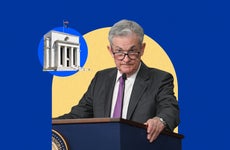
Will stubborn inflation force the Fed to raise interest rates again?
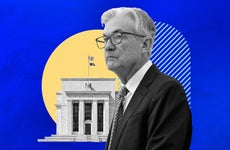
Will the Fed raise interest rates one more time this year? Some economists aren’t convinced
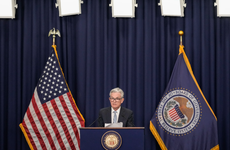
Fed leaves interest rates unchanged, suggests it is not ready to begin cuts
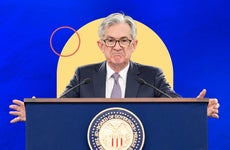
When will the Fed stop raising rates? The time could be coming soon